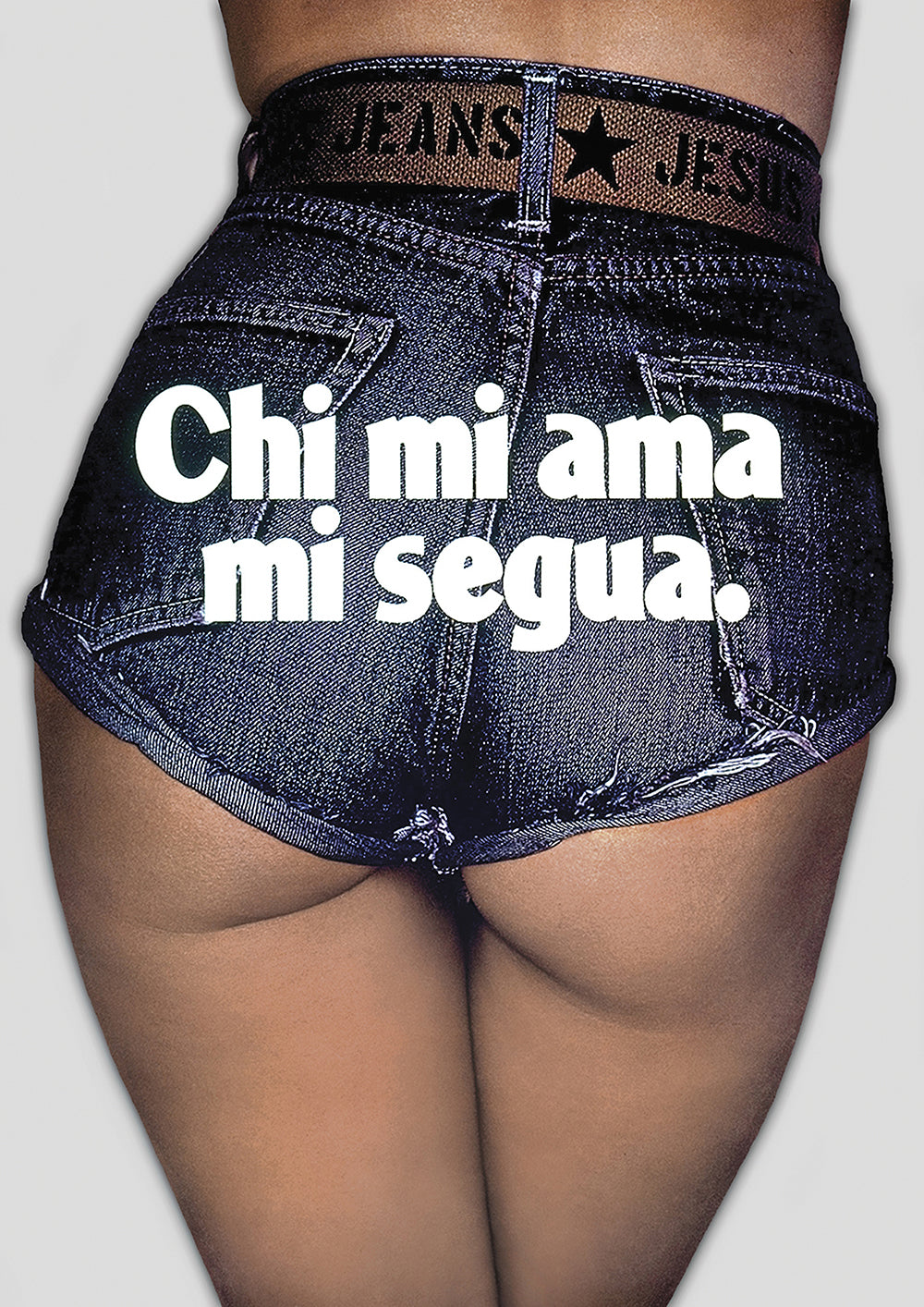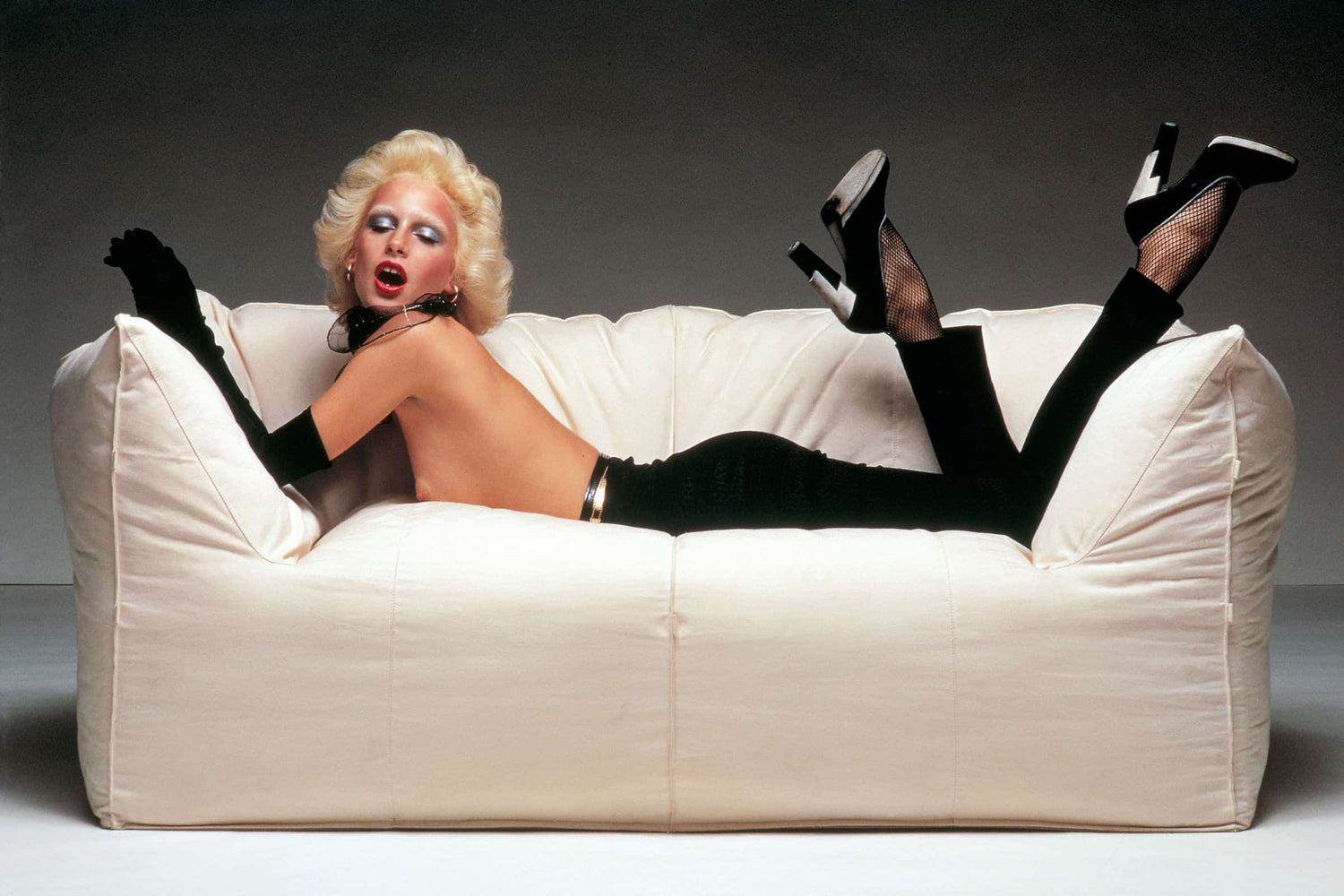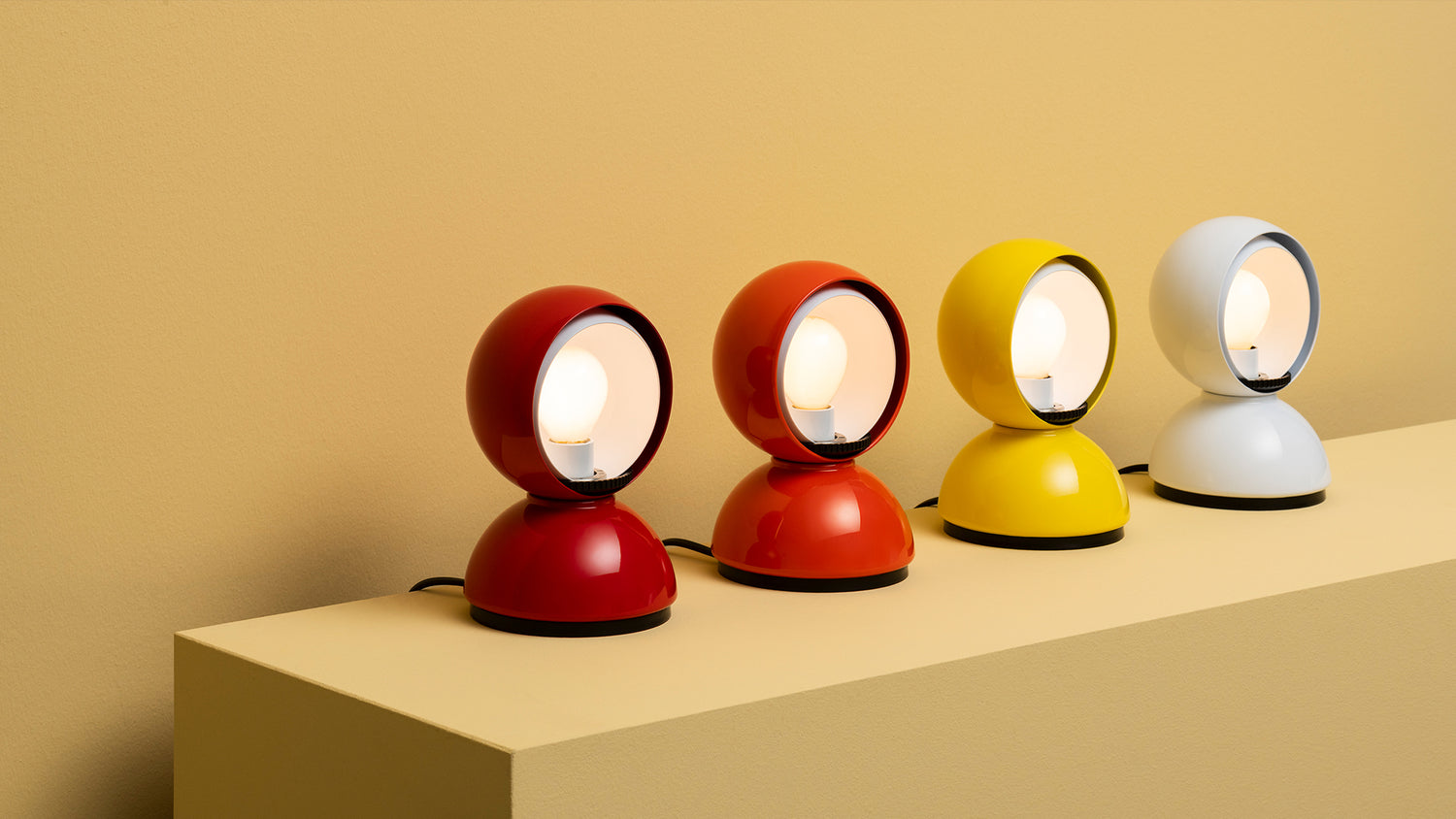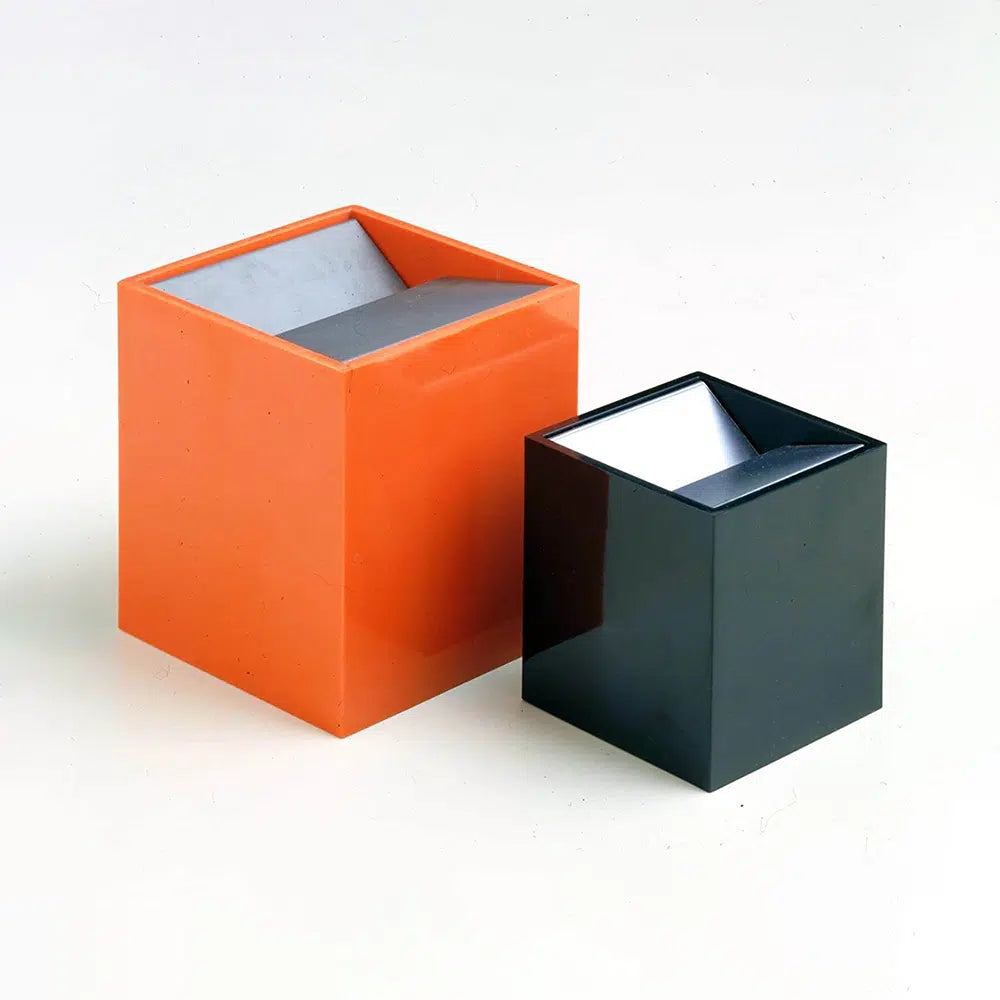A LOVE AFFAIR WITH ITALY
The announcement of the photographer Oliviero Toscani's passing at the beginning of the year sent me back fifteen years, straight into the grand amphitheater of the Faculty of Orthopedics at La Sapienza University in Rome, awaiting my first class on "Fashion Advertising Photography." Yes, you read that right—fashion, in an Orthopedic Faculty. I distinctly remember picking one of the few remaining folding chairs near the exit, just in case.
The first image flashed on the large screen. No, it wasn't a double tibial fracture, but rather a pair of buttocks sculpted into a micro denim short, emblazoned with « If you love me, follow me » in a 70s-style font. A creation by Oliviero Toscani for the Italian jeans brand, Jesus.

I was in the right place, surrounded by the 300 students enrolled in the interdisciplinary course from the Faculties of Philosophy, Economics, and Literature, called "Science of Fashion and Costume." Why Orthopedics, you might wonder? It was the only lecture hall large enough to accommodate us all. I had naively assumed that only a handful of students would be interested in delving into in-depth essays on semiotics and aesthetics.
Do you ever experience those rare, fleeting moments when you feel completely in the right place? When everything around you aligns just as it should? When it came time to choose where to spend my exchange year, there was no hesitation—it had to be Italy. I had been waiting for this moment for so long. I had learned Dante's language thanks to my father, who, in the summer of 1996, signed me up for classes at the Italian School of Casablanca. I found myself in a class filled with thirty-something salespeople who needed Italian for their jobs. As for me, it was my love for soccer—calcio, specifically—that had led me there. For those who remember, those were the years when Marcello Lippi swapped his cigarette for a lollipop, Paolo Maldini’s green water-colored eyes outlined in black, and Fabio Capello’s memorable outbursts... Every Sunday, I accompanied my father to a quaint “moustache” café. This term was used for places frequented mostly by men—mostly, you guessed it, with proudly groomed hair above their lips. The decor resembled that of an old tavern, but the television was state-of-the-art and, most importantly, they had cable, which meant they broadcasted Italian soccer matches.
Three months of Italian school. The best summer vacation. When the term began, my parents equipped us with a satellite dish. The following years were spent immersed in Rai programming. I memorized ALL the advertisement slogans, watched every soccer talk shows, films dubbed in Italian, and talk shows interrupted by performances of young women with endless legs in minimal outfits. My affection for Italian pop music, still going strong, began during this time.
Back to Orthopedics, the crowded amphitheater, the denim-clad behind—Jesus jeans.

This first campaign was quintessential Toscani: a stunningly effective image, a taste for scandal, irreverence serving a serious message, and a talent for composition.
Toscani’s photographs became for me a first translation of a distinctly Italian sense of design. It was thanks to Toscani that I discovered the Bambole by Mario Bellini, which, in my opinion, is one of the most beautiful sofas ever designed. Toscani’s campaign featuring Donna Jordan, Andy Warhol’s muse whom he got to know during his time in New York, propelled the sales of the sofa, culminating in the prestigious Compasso d’Oro award in 1979, one of the highest honors in design.
During those Italian years, I immersed myself in the study of the works of great names in architecture, design, photography, graphic design, the visual arts, and of course, fashion: The Castiglioni brothers, Piretti, Magistretti, Aulenti, Prada, Munari, Fontana, Ponti, Pesce, Scarpa, and many others.
I walked away with three main observations. The audacity of these creators, almost all graduates of the Politecnico di Milano, was consistently supported by entrepreneurs over time (and it’s essential to emphasize the duration of this support). Major design houses, of course—B&B, Cassina, Alessi, Flos, to name just a few—and brands like Benetton with Toscani or Olivetti with Sottsass, Bellini, and De Lucchi, along with all the artisan workshops that managed to maintain an exceptional level of craftsmanship and expertise, thanks to their wise investments in training and innovation. This last point could, in fact, be the subject of a new post all on its own, as it is a crucial issue.
My second observation is that although these creators worked at different times, the quality of their designs is so remarkable that their creations transcend contemporaneity; they were, are, and will remain at the avant-garde. They managed the incredible feat of designing objects that were not only ahead of their time but were also perfectly functional. Creating a beautiful line is one thing, but designing something decades ahead of successive trends while maintaining perfect functionality is an entirely different skill.
Finally, my third observation, and the one that fascinates me the most, is that all of these creations are joyful! Take a moment to look over the iconic pieces of Italian design, and you’ll see how they all carry something childlike—and perhaps that is what places them eternally at the forefront.


This opportunity to study in Italy was fundamental in my journey as a creator. I remember that period as one of the most enriching, yet incredibly demanding, experiences of my life.
It’s only natural that years later, we turned to Italy to learn manual weaving, to acquire solid knowledge of textiles, materials, and their constraints. Italy is home to some of the most prestigious spinning mills in the world, with whom we are proud to collaborate today.
I take this moment to salute all my Italian teachers and friends, dear to my heart.
A thousand thanks to Maestro Toscani.
PS: Instead of presenting a resume to introduce ourselves, we prefer to share with you the life experiences that explain many of our choices at Mestiers.
- Olivetti's slogan is quite telling: "Design meets technology."
** I remember Alessandro Mendini's sketches, which, while retaining the look of a quick sketch made on a napkin, were of great precision.
*** As Angelo Mangiarotti liked to say. Speaking of which, Piero Lissoni shared a delightful anecdote about how one of his designs was rejected by the "caffettologo" at Alessi. The first drawing presented a coffee maker with sublime lines, but one that would have made a dreadful coffee! The Maestro revisited his design and adjusted it to allow for the extraction of a truly worthy caffè.
**** The nights spent studying Nietzsche in Italian remain unforgettable. By the way, I highly recommend reading The Birth of Tragedy, which offers a fantastic lens for understanding human creation.
Photo credits:
- OLIVIERO TOSCANI, Jesus Jeans, 1973
- OLIVIERO TOSCANI, for C&B Italia, Le Bambole by MARIO BELLINI, 1973
- ARTEMIDE, Eclisse Lamp by VICO MAGISTRETTI, 1967
- Cubo BRUNO MUNARI for Danese Milano, 1957
